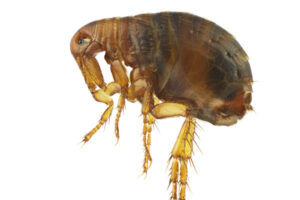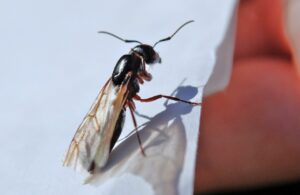Do Bed Bugs Fly? Debunking Myths
You might have heard, read, or been told at some point that
The Nature of Bed Bugs : A Brief Overview
Bed bugs, scientifically known as Cimex lectularius, have been a part of human history for thousands of years. These small, oval, and brownish insects have a knack for adapting and surviving in various environments. While they might not be the subject of your favorite bedtime story, their evolutionary relationship with humans is noteworthy. These nocturnal pests mainly feed on our blood, making our sleeping environments their preferred hunting ground. Over time, they’ve developed specific behaviors that allow them to coexist discreetly in human habitats, which often makes their detection and elimination quite challenging.
In ancient times,
Dissecting the Myth: Can Bed Bugs Really Fly?
If you ever came across a flying bed bug, that would truly be a discovery! The notion of
However, it’s not hard to see why some people might believe this myth. There are numerous pests that can fly, and for someone not well-versed in entomology, it’s easy to mistake one tiny flying insect for another. But it’s essential to clarify that while
- Kills Bed Bugs and Bed Bug Eggs
- Kills Fleas and Dust Mites
- Non-staining, Leaves No Odor
Physical Characteristics
A closer inspection of a bed bug will give you a better understanding of its physical makeup. Ranging from 1mm to 7mm, their size can be compared to an apple seed. While they possess structures called wing pads, these do not function as wings. The wing pads are evolutionary remnants, meaning they are leftover structures from a time when their ancestors might have had wings. Over the millennia, as
Their reddish-brown color, which becomes more pronounced after they’ve fed, and their flattened oval body, are more indicative of their physical characteristics. They have six legs, which grant them their mobility, and they can move quite fast when they sense danger or are in search of a meal.
How Big Are
Behavior Patterns
Understanding the behavior of
Their primary method of moving from one place to another is by ‘hitchhiking.’ They latch onto clothes, luggage, furniture, and other items, allowing them to spread to new environments. This behavior has made them notorious travelers. If you’ve ever heard of bed bug infestations in hotels, it’s because of this hitchhiking behavior. One infested traveler can unknowingly spread the pests to numerous locations. This underscores the importance of being vigilant, especially when staying in shared accommodations.

Common Misconceptions about Flying Bugs
In the realm of pests, myths and misconceptions abound. One prevalent misconception is the idea that all small bugs can fly. This generalization often leads to unnecessary panic and misidentification. It’s essential to understand that while many tiny insects possess wings and can fly, not all do. Just because a bug is tiny doesn’t automatically give it aerial capabilities. The incorrect identification can sometimes delay the right treatment, especially when dealing with pests that require specialized methods of extermination.
Another common fallacy is associating bug flight with danger. While some flying insects, like mosquitoes, can transmit diseases, the mere ability to fly doesn’t make an insect more harmful. In reality, some of the most problematic pests, like
- Kills Bed Bugs and Fleas
- Inhibits Reinfestation Up to 7 Months
- Use indoors in enclosed spaces
- Non Toxic
Bed Bugs vs. Fleas
Bed bugs and fleas are often confused due to their similar size and penchant for biting humans. However, they have distinct characteristics and life cycles.
Distinguishing between the two is vital for effective treatment. While

Bed Bugs vs. Flying Ants
Another common mix-up is between
These distinctions are crucial because the treatments for ants and

How Do Bed Bugs Move?
One might wonder, if
Speed and Stealth
Their speed is often underestimated. When they sense a potential threat, they can move swiftly to avoid it. Additionally, their nocturnal nature provides them with the advantage of moving when their hosts (humans) are least active. This stealthy behavior ensures their survival and ability to feed without getting detected.
- 100% Kill Efficacy Bedbugs, Mites, Eggs
- Lasting Protection
- USDA BIO-certified
- Plant Extract Based & Non-Toxic
- Child & Pet Safe
Hitchhiking: The Real Danger
Bed bugs’ most notorious mode of transport is hitchhiking. They can latch onto luggage, clothing, furniture, and other belongings. This mode of transportation allows them to spread across various locations, making them unintentional world travelers. One infested item can lead to a full-blown infestation in a new environment, making their hitchhiking habits a significant concern for many.
Preventing a Bed Bug Infestation
Awareness is the first step in prevention. Understanding the habits and behaviors of
Regular Inspections: Conducting regular inspections of your living space is crucial. Check for signs of
Protective Measures: Investing in protective encasements for mattresses and pillows can act as a barrier, preventing
You might be interested in: The Role of The Pregnancy Pillow in Expectant Mothers’ Lives







